Gorilla trekking is one of the major tourism activities in the East African region. Travelers from all over the world visit Uganda, Congo and Rwanda annually to view these amazing primates in their natural habitats. Other tourism activities in these three countries include game drives, nature walks, bird watching, cultural visits, fishing and boat rides among others. Gorilla trekking is a fun activity which entails hiking through dense forests to search for gorillas. Gorillas can be viewed up close at Rwanda’s Volcanoes National park, DR Congo’s Virunga National park, Uganda’s Mgahinga national park and Bwindi Impenetrable national park. Uganda has the majority of the world’s remaining mountain gorillas but some travelers prefer Rwanda because of the shorter driving distance to the gorilla parks.
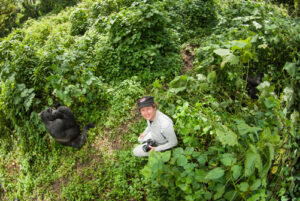 Among the three countries that offer gorilla trekking, Rwanda is the most expensive destination. Gorilla Permits in Rwanda cost $1500 and this is way more than what is charged in Uganda and DR Congo. Gorilla trekking permits cost 700 US Dollars in Uganda and 450 US dollars in DR Congo. Additionally, accommodation costs in Uganda and Congo are generally cheaper than those in Rwanda. Gorilla permits are the tickets for visiting the gorillas in the wild. Permit are usually on high demand and acquiring one is much easier when you make your bookings in advance – preferably 6 months earlier than your expected travel date.
Among the three countries that offer gorilla trekking, Rwanda is the most expensive destination. Gorilla Permits in Rwanda cost $1500 and this is way more than what is charged in Uganda and DR Congo. Gorilla trekking permits cost 700 US Dollars in Uganda and 450 US dollars in DR Congo. Additionally, accommodation costs in Uganda and Congo are generally cheaper than those in Rwanda. Gorilla permits are the tickets for visiting the gorillas in the wild. Permit are usually on high demand and acquiring one is much easier when you make your bookings in advance – preferably 6 months earlier than your expected travel date.
The best time to visit the gorillas is during the dry seasons of May to August and December to February when the gorilla trails are mud free, not slippery and roads to the parks more accessible. The weather seasons are the same in all the three countries. On the day of gorilla trekking, tourists are briefed at the park headquarters about what to expect while tracking the primates. Some of the rules for gorilla trekking include keeping a safe distance from the primates, not eating in their presence, using cameras that don’t have flash lights and staying silent so as not to alert the primates.
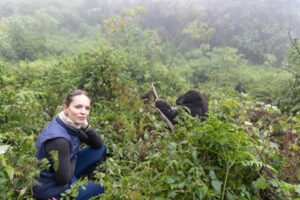 The gorilla parks are accessible by either road or air. Road transport is preferred by most Travelers because they get the chance to experience the nature and stop at other important tourist attractions along the journey. Air transport on the other hand is best for those Travelers who have limited time in the country though it’s more expensive compared to a road trip. The gorilla parks are also surrounded with very beautiful accommodation facilities in form of Eco-lodges, cottages and hotels. Some are situated in the nearby towns and offer budget friendly or luxurious facilities.
The gorilla parks are accessible by either road or air. Road transport is preferred by most Travelers because they get the chance to experience the nature and stop at other important tourist attractions along the journey. Air transport on the other hand is best for those Travelers who have limited time in the country though it’s more expensive compared to a road trip. The gorilla parks are also surrounded with very beautiful accommodation facilities in form of Eco-lodges, cottages and hotels. Some are situated in the nearby towns and offer budget friendly or luxurious facilities.
Benefits of Gorilla Trekking to Communities Living close to the Park
Gorilla trekking has benefited the communities living around the parks in many ways. The monies collected from gorilla tourism has enabled the park management to pay scientists like veterinary doctors 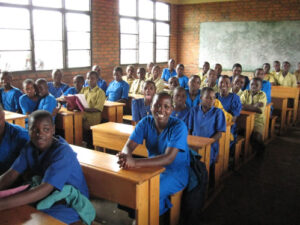 and Researchers. These scientists perfume important duties like checking the primates regularly for any sicknesses, conducting gorilla censuses and establishing how to improve on their living conditions where necessary. This is why the overall population of mountain gorillas continues to increase.
and Researchers. These scientists perfume important duties like checking the primates regularly for any sicknesses, conducting gorilla censuses and establishing how to improve on their living conditions where necessary. This is why the overall population of mountain gorillas continues to increase.
Money generated from gorilla trekking has enabled the governments of the three countries to employ Rangers whose role is to protect the primates from intruders, poachers, rebels and forest encroachment among others. Gorilla trekking has also helped to prevent poachers from encroaching the parks to hunt down the gorillas for meat, other valuable body parts or as pet. This is because there are regular visitors in the company of the park 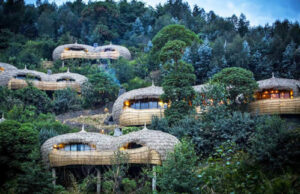 Rangers. This is of benefit to the communities around the parks in such a way that when the primates are protected from poachers, they and their future generations will continue to be beneficiaries of gorilla trekking.
Rangers. This is of benefit to the communities around the parks in such a way that when the primates are protected from poachers, they and their future generations will continue to be beneficiaries of gorilla trekking.
The Rangers, Park Guides and standby patrol teams not only organize gorilla trekking but also monitor the movement of the primates within the forests to know where they last built their nests so as to ensure that tourists see them in the shortest time possible.
Mountain gorilla trekking has led to the development and rejuvenation of other sectors of the economy for example, the road networks leading to the gorilla parks has improved. As more tourists register for 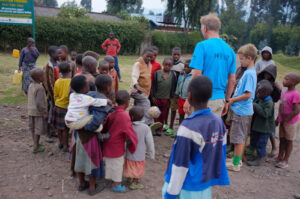 gorilla trekking, the money generated has also been used to develop other tourism sites/activities such as chimpanzee and golden monkey trekking.
gorilla trekking, the money generated has also been used to develop other tourism sites/activities such as chimpanzee and golden monkey trekking.
A percentage of the money collected from gorilla permits is always remitted to the surrounding communities of the parks. This tourism money has enabled the local people through their leaders to set up schools, health centers, clean and safe water sources among others. These services are either offered free of charge or at a great discount to the communities living close to the gorilla parks.
Travelers who visit the gorilla parks usually visit the surrounding communities as well and take part in cultural activities. These activities include learning the traditional songs/dances, sampling traditional 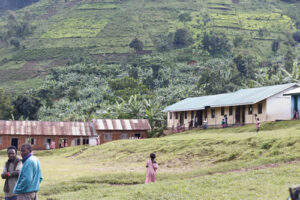 African foods, purchasing traditional African crafts and souvenirs (mats, hats, stools and music instruments). The continuous presence of tourists in gorilla parks has enabled the local communities to have an improved quality of life because more opportunities are available to them.
African foods, purchasing traditional African crafts and souvenirs (mats, hats, stools and music instruments). The continuous presence of tourists in gorilla parks has enabled the local communities to have an improved quality of life because more opportunities are available to them.
Tourists also reside in the locally owned safari lodges within the park surroundings and neighboring towns. This has led to the rise of local entrepreneurs who are behind the amazing accommodation facilities. Additionally, many local youths have been employed in the safari lodges and in the parks as porters.
In conclusion, gorilla trekking has benefited the local communities in many ways. It has helped to improve the livelihoods of many people residing close to the parks by providing employment opportunities, business opportunities and social services.

